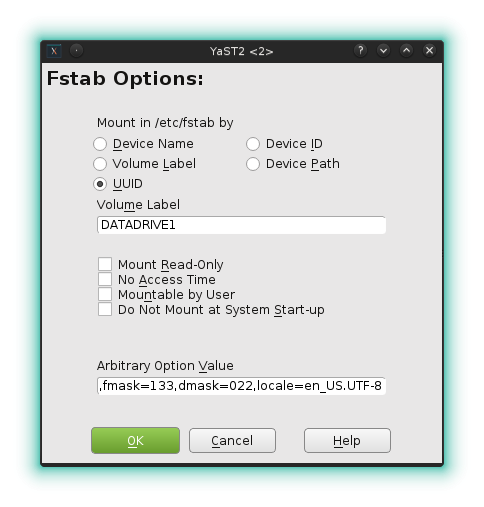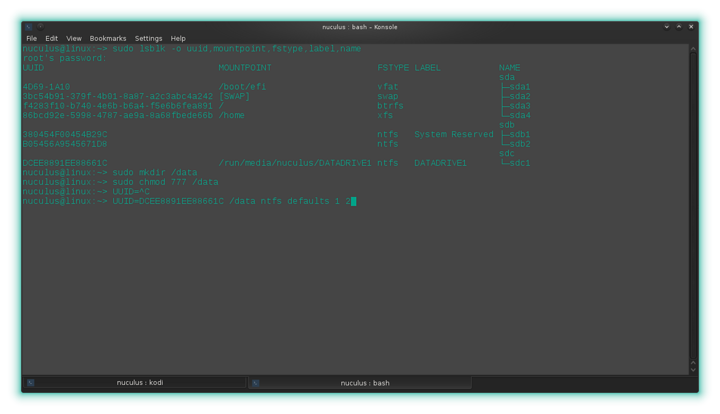Yeah. I don't see your external in there, did you not finish with the YaST tool?
If you don't mind using the console, we can get this set up pretty quickly.
sudo lsblk -o uuid,mountpoint,fstype,label,name
This command will let you find the UUID and fstype for the partition.
Then make a directory where you want the filesystem to be mounted. For example to mount to /data, you would need to make that directory. You probably also want to make sure you have permission to read/write files in there as a regular user.
sudo mkdir /data
sudo chmod 777 /data
Now you just add a line to fstab as follows:
UUID=uuidFromFirstColumn /data fstypeFromThirdColumn defaults 1 2
That should all be on the same line, in case the formatting gets weird. The first and third column refer to the output of the lsblk command used above.
One thing you might want to change since this is an external, is instead of defaults use nofail to prevent errors from being reported if the drive is unplugged at boot. This is optional and maybe you would want errors to be thrown anyway.
Check that you have done the changes correctly by unmounting the filesystem if it is currently mounted, then use the command
sudo mount -a
to mount all the filesystems in fstab. If you get any errors, double check fstab and try again. If you can't figure it out, post back and we'll see what happened. After the mount completes without errors, you should be able to install your games there.


